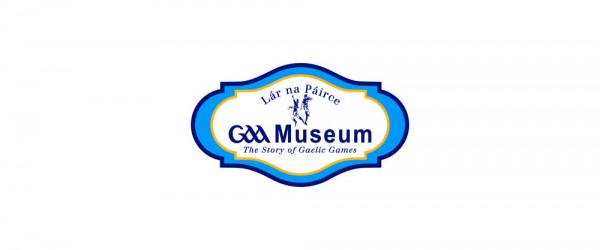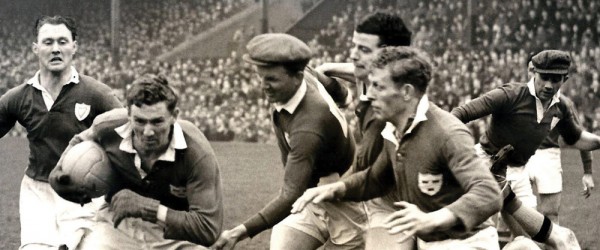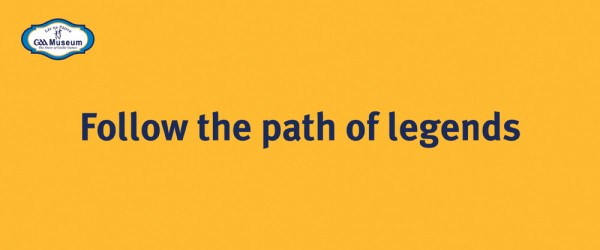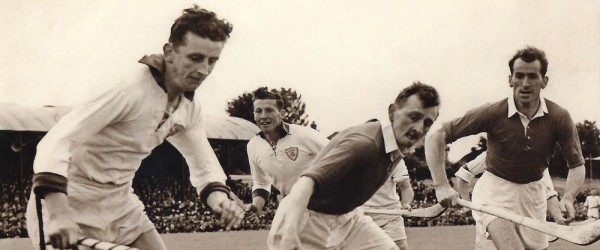Lár na Páirce
Background to Lár na Páirce
Thurles is a town which has been steeped in the tradition of Gaelic Games since the G.A.A. was founded there in 1884. As such, it is the ideal location in which to recreate and interpret the proud history of Ireland’s premier sporting organisation. This need to preserve and foster the rich heritage our games have bestowed, presented an opportunity for Thurles Town to establish a day visitor attraction. To this end a Project Team was set up in 1989, consisting of representatives of Thurles Development Association, Shannon Development and Tipperary County Board G.A.A. The committee purchased the town’s old National Bank building with the support of Shannon Development. With the help of FÁS, renovation of the building commenced in 1990 with the major work of replacing the roof and securing the building. The financial package which was put in place involved a combination of private and public sector funding along with a substantial G.A.A. and community contribution. In November 1994 to mark the 110th anniversary of the foundation of the G.A.A., the dream came to life when President Mary Robinson officially opened Lár na Páirce, the National Visitor Centre for Gaelic Games.
Sam Melbourne – A Special G.A.A. Man -
Sam Melbourne’s collection of G.A.A. memorabilia forms the basis of Lár na Páirce, the Museum of Gaelic Games situated in Thurles, Co. Tipperary.
Over seventy years ago he started his collection which includes over 300 hurleys, signed by their star owners, photographs, whistles, jerseys, footballs and sliotars, newspaper cuttings and trophies, all relating to the history and deeds of great hurlers and footballers.
Born in 1923 at Curraheen, Horse & Jockey, Sam was a Church of Ireland man of farming stock whose boyhood heroes were Jack Gleeson and Tim Condon, who won three and four All-Irelands respectively at the turn of the century. Sam himself played hurling with success and was a member of the Mid minor team in 1940 and 1941. Cycling was another important sport for him and he recalls cycling to the 1945 All-Ireland.
His greater claim to fame was his collection of G.A.A. material, which he started in 1937 with Johnny Ryan’s hurley. Johnny and the rest of the famous Moycarkey family were also his heroes.
He continued his collection when he moved into Thurles in 1948 to open a sports shop in Friar Street. The oldest hurley in the collection dates back to Ennis in 1870. According to Sam he never met with a refusal when he asked a player for an item.
John was married to Charlotte Smyth from Killenaule by this stage and they decided to move to Dublin in 1956. His collecting never ceased and over the course of years he had amassed a large amount of material.
Sam entered a new stage of his life after coming to Dublin, Someone suggested he should put the material on show and he jumped at the idea. One of the first places he brought his exhibition was to Ballycotton on the invitation of Jack Lynch and Fr. Bertie Troy. He never looked back after that.
He used load up his collection in a Hiace van on a Friday evening and drive to some G.A.A, club or community centre anywhere in the country, set up his exhibition on Saturday and return home on Sunday evening. He would give a talk, answer all kinds of questions and even add to his collection during the visit. He admits this was a wonderful part of his life and he used to love doing it.
He continued this way of life into the eighties when his collection had grown so large his garage was no longer big enough to contain it. The years were also catching up on Sam and the energy wasn’t as great as previously. He decided to find a new owner for the collection. Eventually the Tipperary county board purchased it from Sam in 1988.
The county board looked around for a location to house the collection and, in conjunction with Thurles Development Association and Shannon Development, the old Bank of Ireland building on Slievenamon Road was purchased, refurbished and opened as a Museum of Gaelic Games by President Mary Robinson on November 8, 1994, one hundred and ten years and a week after the foundation of the G.A.A. in Hayes’s Hotel. It ensured that Sam Melbourne’s collection would continue to be available for viewing by the general public.
The Hurley Collection
The hurley collection is a spectacular section of the overall display. As well as illustrating the range of hurley styles and the way the shape of the stick has evolved over the decades, the collection also evokes memories of the great players, who played stirring games with the hurleys on display. Names like Jimmy Doyle from Tipperary, Joe Salmon of Galway, Jack Lynch of Cork, Pat ‘Diamond’ Hayden from Kilkenny, Nickey Rackard from Wexford Jackie Power from Limerick, and many others leap out to fascinate the eyes as one looks along the lines of the hurleys. One of the most interesting looking sticks is that of Tony Reddin, the famous Tipperary goalkeeper from the middle of the 19th century, which is so battered and repaired that it brings one back to a time when the lot of a goalkeeper was a much more dangerous one than it is today and he had to defend himself not only against stinging shots but also against flying bodies.
The Hurley Maker
Another interesting exhibit is that of the hurley maker which evokes a time when hurleys and sliotars were mostly crafted by individual hurley makers in their own shops. In an age when the craft has been mostly taken over by mass-production operations, it is fascinating to look back to a different era when the hurley maker not only crafted the hurley from a piece of seasoned ash but performed another very important task for hurlers, mending cracked and broken sticks. In our modern, disposable age, when a new hurley is acquired to replace the broken one, it is an education to look back to a time when hurlers held on to their hurleys long past their sell-by date and devised all kinds of means to extend their lives by careful patching, banding and repair. This was a great craft and this exhibit shows examples of how the lives of hurleys could be extended indefinitely.
Great Players
Like any game of skill hurling and football have produced great players. Quite an amount of space in Lár na Páirce is devoted to players who have excelled and stand out above their peers since the foundation of the G.A.A. Probably the outstanding hurlers of all time were Christy Ring of Cork and Mick Mackey of Limerick, while football greats have to include Mick O’Connell of Kerry and Sean O’Neill of Down and these appear as models in the museum. Also shown are the hurling and football Teams of the Century, which were chosen in 1984, as well as the All-Star selections since they were first picked in 1971.
Antiquity of Hurling
Hurling is a very ancient game with the first recorded historical reference dating back to 1272 B.C.
The game features in ancient Irish myth and legend. The Lár na Páirce exhibit tells the story of one of the greatest legendary heroes, Cuchulainn, and how he got his name. Originally named Setanta he set out for Eamhain Macha one day to attend a school for noblemen. To shorten the journey he hurled the ball before him and caught it before it landed. In this way he shortened the journey and was soon at his destination. On arrival he was attacked by a guard dog and to protect himself he hit the ball into the dog’s mouth and choked him. The dog’s owner was disconsolate but Setanta said he would become the replacement guard or Cú Chulainn.
Hurling and the Brehon Laws
Another proof of the antiquity of hurling is to be found in the many legal references to the game which date from even before the Brehon Laws of the 7th and 8th centuries. These laws legislated for hurling and early Irish lawyers identified four serious fouls in hurling:
- A sandwich foul when two or more men jostled and shouldered a man between them,
- A two-way pull or cross-swiping
- Throwing a hurley among a group of players
- Lying on the ball in a game when no goal was scored and ensuring that the ball was kept nearest the opponent’s goal for most of the game.
Another breach of the law was to knock down a wall or fence, or any portion thereof, in the course of a game and not replace it.
The Golden Age of Hurling
One of the most fascinating periods for hurling was in the eighteenth century, which was known as the Golden Age of hurling. During this period landlords throughout Ireland patronised the game and organised teams of players from among their tenants. They played games against other landlords for wagers, some of which could be as high as £10. One such landlord was Dudley Cosby of Stradbally who died in 1729. His son, Pole, wrote this about him: ‘He danced on the ropes as well as any rope dancer that ever was. He was a fine tennis and five player, a most extraordinary fine hurler and was very fond of all these things and practised them very much when he was young and able , , ,’
No Common Set of Hurling Rules
When two landlords got together to play a hurling match for a wager, many things had to be agreed to before the game could go ahead. There was no agreed set of rules and the first set of common rules that have come down to us are the so-called Killimor Rules of 1869. The game was played under different rules in different places so a list of rules had to be agreed to, which would include the number of players per side, the size of the field, the length of time played or how many goals the winning team had to get, an agreement on what constituted a foul, who would referee the game, etc
Only when these matters were agreed could the game go ahead.
Geography of Hurling
An interesting map in Lár na Páirce illustrates the geography of hurling. This shows how the game is strongest south of a line between Galway and Wexford. Historical records of hurling games in the seventeenth and eighteenth centuries show that this was the area where hurling was mostly played, apart from pockets in the Glens of Antrim and parts of Donegal. There is an interesting theory that the hurling area coincides with the area conquered by the Anglo-Normans in the twelfth century. According to this theory the invaders brought their organisational skills to bear upon the game and it became stronger as a result. Hence the strength of the game in Kilkenny, Waterford, Wexford, Cork, Tipperary Limerick, Clare and Galway.
The Trophy Collection
Lár na Páirce has an impressive trophy collection, which is expanding all the time. One of the most unusual trophies is the Samuel Miguez trophy, which originated in Argentina. The game of hurling hasn’t spread very much outside Ireland and when it was played abroad it was predominantly among the Irish diaspora. One such place is Argentina where emigrants from Waterford, South Tipperary and Westmeath went to in the 19th century. They brought their hurley sticks with them and they were numerous enough to organise an All-Argentina championship with six teams. A native Argentinian, who was married to a Westmeath woman, put up this trophy for the competition. During the 1930s the trophy was won outright by a team from Tipperary and one of the players brought it back home when he returned to Ireland before World War 2, Once Irish emigration to the country ceased the game gradually disappeared and it is only a memory today.
The Silver Cup
Another trophy from the collection is the Silver Cup. It was put up by Michael Cusack in 1886 for a hurling game between South Galway and North Tipperary for the championship of Ireland. It is sometimes called the ‘first All-Ireland’. It was played in the Phoenix Park and a set of rules had to be agreed before the game could be played.Cusack refereed it and Tipperary won. The Galway team got special togs made for the game but they were badly sewn and burst during the game. They were also misfortunate in taking the wrong train home and ending up at Limerick Junction rather than Ballinasloe.
The Foundation Meeting
One of the greatest reasons for having a G.A.A. museum in Thurles is the fact that the foundation meeting of the organisation was held in Hayes’s Hotel in the town. The date was November 1, 1884 and only seven of the more than sixty invited to attend turned up on the date. However, they included such powerful figures as Michael Cusack from County Clare and Maurice Davin from Carrick-on-Suir. From these small beginnings the Gaelic Athletic Association spread like a ‘prairie fire’ and became the greatest sporting organisation in the country. The inaugural meeting is re-created in Lár na Páirce.
More than a Sporting Organisation
The official name of the new organisation was ‘The Gaelic Athletic Association for the Preservation and Cultivation of National Pastimes.’ Initially athletics was the main interest but gradually hurling, football, rounders and handball became prominent. However, from the start the G.A.A. was more than a sporting organisation and promoted other aspects of Irish culture, such as the language, music and dancing. The Irish language was used in the names of clubs and players and was also used as far as possible in the transaction of club business. The G.A.A. also promoted Irish dances and music by holding ceili rather than English dances on social occasions.Side by side with this promotion of Irish games and culture was a determined effort to support Irish-produced goods and services.
Great Broadcasters and Their Influence
As gaelic games became more popular the local and national media came to realise their potential in increasing the sales of newspapers. In an age when Ireland had only one broadcaster 2RN (later Radio Eireann) soon realised that the medium could be used for the transmission of games. The first broadcast of a hurling game was on August 29, 1926, when P. D. Mehigan gave a live commentary of the Galway-Kilkenny All-Ireland semi-final. The arrival of Micheal Ó Hehir in 1938 initiated a great period of broadcasting and he was followed by the equally-renowned Micheal Ó Muirheartaigh, and others. Broadcasting did a huge amount to increase the popularity of gaelic games and this development continued with the advent of television. There is a special exhibit devoted to broadcasting in Lár na Páirce
Players’ Gear
As well as hurleys the Lár na Páirce exhibition includes a large number of jerseys worn by famous players as well as many pairs of hurling and football boots. Some of the latter look primitive by today’s standards and the football boots in particular reflect a time when the game was played with an untreated leather football that absorbed water and became heavier and heavier in wet conditions. Boots needed to be much sturdier than today’s to kick such a ball.
Also the jerseys of the past were made of much different material to those in use today. They were mostly wool and suffered the fate of wool garments when washed, when they shrank if the water was too hot. One of the jerseys on display belonged to the robust Gunner Brady of Cavan and it has shrunk so much that it would be stretched to fit on an eight-year old!




